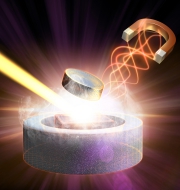TIFR Researchers discovery challenges theory of superconductivity
Researchers’ team from Tata Institute of Fundamental Research (TIFR) have discovered that bismuth semi-metal in bulk form becomes a superconductor.
The team was lead by Dr. S. Ramakrishnan of the Department of Condensed Matter Physics and Material Sciences at TIFR, Mumbai.
What researchers have discovered?
They have discovered that when temperature of bismuth semi-metal in bulk form is lowered to 530 microKelvin (about -273 degree C), it becomes a superconductor. It acts as superconductor at temperature three orders of magnitude higher than the theoretical prediction.
Significance
- This landmark discovery challenges the conventional understanding of superconductivity based on Bardeen-Cooper-Schrieffer (BCS) theory.
- It cannot explain the superconductivity seen in bismuth as it only explains superconductivity in most low Tc (critical temperature) superconductors.
- The discovery demands a new theory and a new mechanism to understand superconductivity in bismuth.
- It provides an alternative path for discovering new superconducting materials which are very different from the conventional superconductors.
What are Superconductors?
Superconductors are materials that conduct electricity with no resistance whatsoever. In order to achieve superconducting state, the element should have mobile electrons, and these electrons should come together to form pairs, known as Cooper pairs.
Unusual phenomenon in bismuth
Unlike other elements in the periodic table, bismuth has unusual phenomenon. Bismuth has only one mobile electron per 100,000 atoms. Whereas, the metallic superconductors have one mobile electron per atom. Since carrier density of bismuth is so small, it was believed that bismuth will superconduct. Thus, superconductivity in bismuth is puzzling.
Month: Current Affairs - December, 2016


